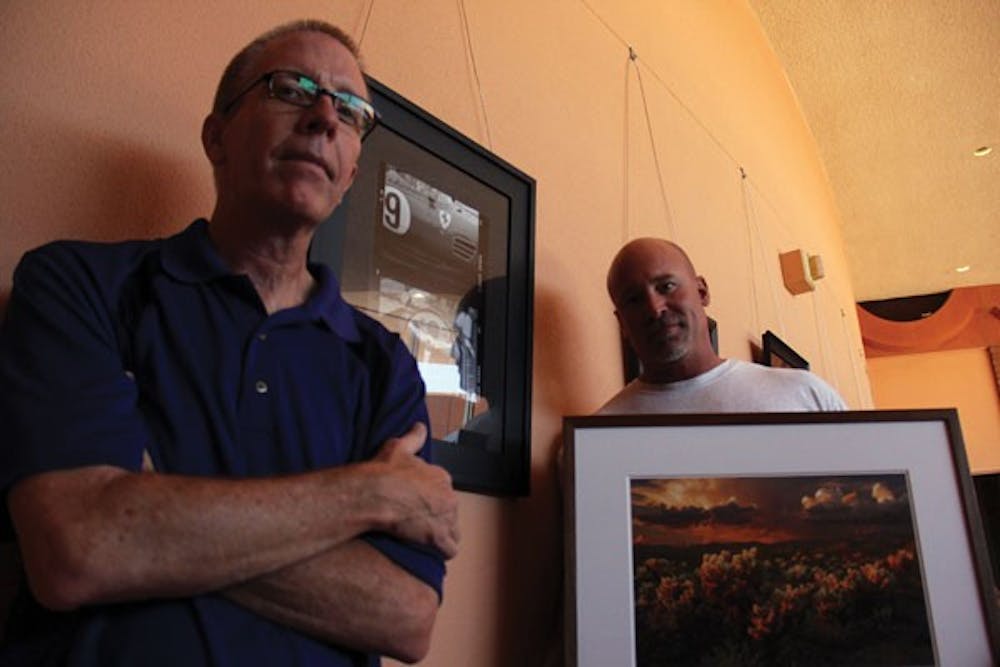For the next month, as patrons pass through the halls of Grady Memorial Gammage Auditorium, they will see photographs at various of points along the outer wall of the auditorium of objects in nature formed over a few million years, untouched by man, and man-made objects from our recent collective past.
The photography, which comes from two local artists, Mark Capurso and Rhet Andrews, superficially couldn’t have more separate works on display, but their commonalities come from their work capturing the unique qualities in their subjects. Their photography uses only the natural light provided for them on the days they shot.
The concentration of Capurso’s body of work on display consists of vivid color photographs taken at the right moment, between sunrise and sunset, with natural light hitting desert objects like flowers or whole cliff faces at certain sections of the Grand Canyon.
One such photograph, titled “Toroweap Sunset,” was a finalist in this year’s Arizona Highways Photo Contest. The photo depicts the setting sun illuminating several points of the eroded canyon walls, giving it a rich, orange-ish glow.
He had a quick fascination with Arizona and other Southwestern landscapes after moving here from New York City. The nature scenery is what he referred to as “a second childhood.”
“I would say that 95 percent of my photos are taken in the last 15 minutes before sunset or the (first) 15 minutes immediately after sunrise, when the light is incredibly warm and dramatic,” Capurso said. “Most people don’t see that. You’re either asleep still, or you’re sitting down to dinner with your family. That’s what I missed to get these shots.”
Unlike Capurso’s photos, Andrews’s work focuses on objects that were made by man, including signs of roadside hotels and vintage race cars at rest and while gunning down various race tracks at shows in California and in Europe.
His work’s origins started several years ago at these shows when he shot subjects on old-fashioned film cameras in order to differentiate his work from other vintage car enthusiasts shooting on digital cameras.
“To me, all these cars are works of art,” Andrews said. “Historically, they were so much more, I thought, in the way cars were designed in the old days, as pieces of art, versus today they are more functional for efficiency and co-efficiency, and stuff like that. So I think I’m trying to share that pieces of art that were made in the ‘50s and ‘60s.”
Andrews’s photos were shot on small and medium cameras. As an aesthetic touch, during the printing process, he decided to frame his images to include the outer edges of his negatives, with the manufacturing marks and information clearly visible on the prints.
Both men took up photography as a hobby. Capurso currently works at an advertising firm, while Andrews is retired, but their work comes across as anything but amateurish. Even to untrained eyes, it’s obvious that the artists have much expertise with the hobby.
They employ tricks of the trade that only those technically efficient in the field would use. For instance, in his digital photographs, Capurso shoots his scenic shots in the unprocessed image format, RAW, while Andrews prints his negatives on an enlarger. Both of their work are matted in frames.
These are not photos printed with haste at a local CVS.
Reach the reporter at tccoste1@asu.edu.





